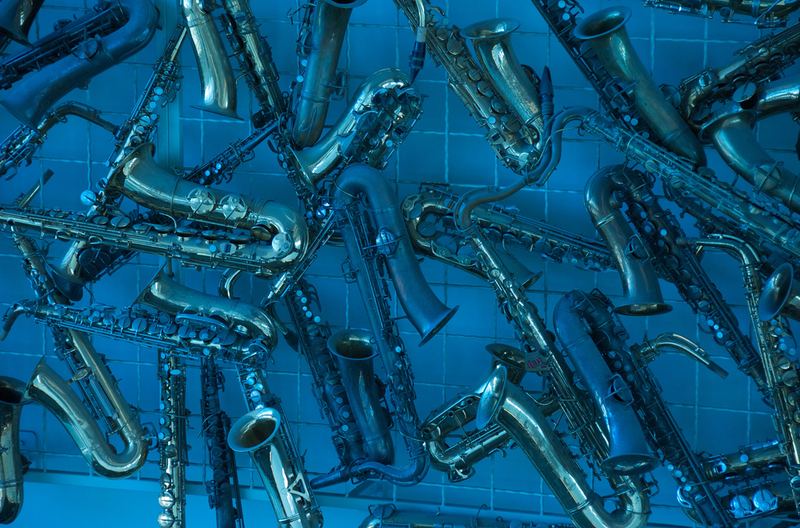The classical sax is amazing. Here are seven pieces to get you started
by James Bennett II
The saxophone is a relative latecomer to the orchestra, which means a lot of us don’t give it much thought as far as classical music goes. That doesn’t mean composers have neglected it — while it’s a huge part of the jazz scene, there is no shortage of classical sax, either. Here are seven pieces that will open your ears (and hearts) to the possibilities of this golden wind instrument.
Rhapsody for Saxophone — Debussy (1919, Posthumous Premiere)
During the late 19th century, saxophonist Elise Hall realized there wasn’t enough sax music out there for her to play. To correct that imbalance, she commissioned a number of works, among which was Debussy’s Rhapsody for Saxophone. The project ended up being just a wee bit complicated, but luckily, he pulled it off (though, sadly, the composer died before the premiere, and Hall had lost her hearing by the time it was finished). The direct interplay between the alto saxophone and the orchestra is kept to a minimum here, with the latter providing a musical background that is at times oneiric, mischievous and stately.
“Il Vecchio Castello” from Pictures at an Exhibition — Mussorgsky, arr. Ravel (1922)
Mussorgsky’s Pictures was originally a suite for piano, but in the century after its composition, it was arranged dozens of times by as many composers. Most notable of these is Ravel’s orchestration, which includes a pensive, distant alto saxophone solo to conjure images of an old Italian castle, with a troubadour outside the gates, singing the songs those sorts of folk are wont to belt.
“Dance of the Knights” from Romeo and Juliet— Prokofiev (1938)
The score of Prokofiev’s Shakespearean ballet calls for a tenor sax, which is put on display during the at-times brash — dare I say swashbuckling — “Dance of the Knights.” The more lyrical passages feature it in concert with its woodwind cousins. To restate the theme, Prokofiev first gives the job to the tenor sax, who then passes it off to the solo clarinet and, finally, the violin.
Sonata in C-Sharp Minor— Fernande Decruck (1943)
Twentieth-century composer Fernande Decruck doesn’t appear on a lot of major orchestra and chamber music programs these days, which is a shame because of the immense weight of her contributions to the saxophone repertoire. She wrote over 40 pieces for the instrument in its various forms, including the Sonata in C-Sharp Minor for saxophone and piano. Her animated writing showcases the saxophonist’s incredible agility without sacrificing dynamic control. This is particularly evident in the third movement, ironically designated (at least in this author’s opinion) “Légèrement animé” (slightly animated).
An Eye for Optical Theory — Michael Nyman (1982)
Nyman has written at least two arrangements of An Eye for Optical Theory, featured on the soundtrack for The Draughtsman’s Daughter. They both involve the saxophone, but the version that tends to elevate our heart rates is the one that has cemented itself as a bop of the truest order. With unrelenting energy, a baritone sax rips into the four-bar phrase around which the entire piece revolves. It’s joined by the angular chords of the piano and a supporting cast of strings — and while the latter flirts with the melody, it’s the sound of soprano saxophones cutting through the meticulously organized, rampaging din that will make its way into your ears.
Quatuor de Saxophones — Ida Gotkovsky (1988)
The French composer and professor has written several pieces of sax-centric chamber music, including this quartet — a masterful display of what the four main instruments of the saxophone family are capable of. In fact, of all the pieces on this list, Quatuor de Saxophones might be the one best suited to demonstrate the sound of the saxophone in a chamber setting. The instrument’s timbre is a pleasure to listen to, and while the sonic cohesion of the finale lets the saxophone operate as one pulsing organism, the limited instrumentation makes it surprisingly easy to focus in on— and get to know —one specific sax voice.
MO’INGUS — Shelley Washington (2016)
Charles Mingus brought an incredible amount of energy to the pieces he wrote for his big band — just ask those present at Prom 53 of the 2017 Proms. Composer Shelley Washington, herself a baritone saxophonist, created this solo work in tribute to Mingus’s towering musical legacy, writing that it is “inspired by some of my favorite licks that Charles Mingus ever wrote.” At nearly eight minutes long, Washington creates a space to explore the technical limits of her sax, growling at the depths and strolling into a smoky lyricism.
